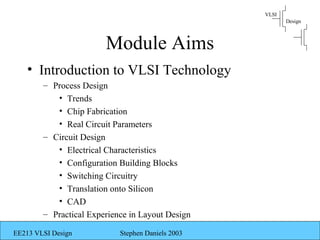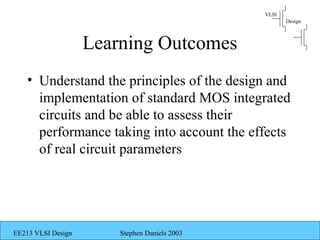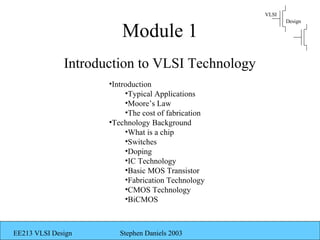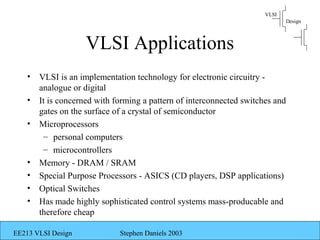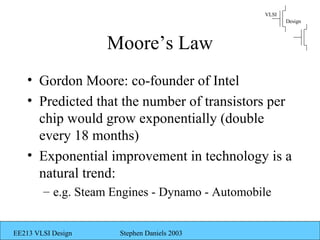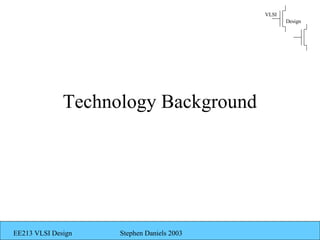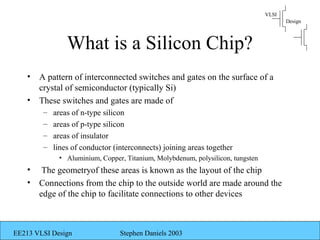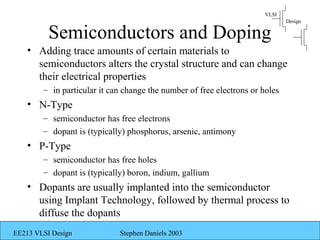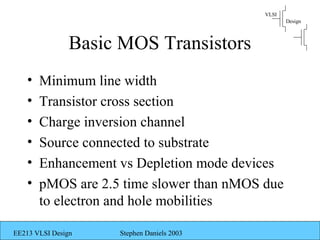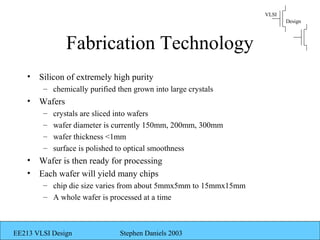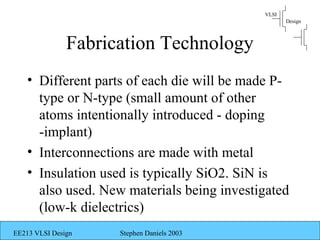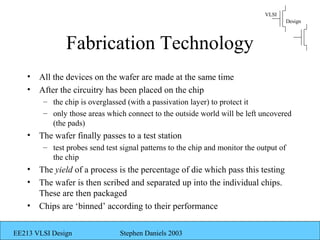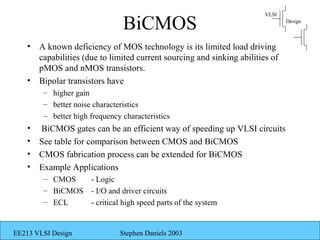This document provides an overview of a VLSI design module. It introduces VLSI technology, including chip fabrication processes, circuit design principles, and practical experience in layout design. The module aims to help students understand MOS integrated circuit design and performance when accounting for real circuit parameters. It will provide hands-on experience using a layout and simulation software package. Reading materials are also listed to support learning about microelectronics, VLSI design, and basic VLSI concepts.
